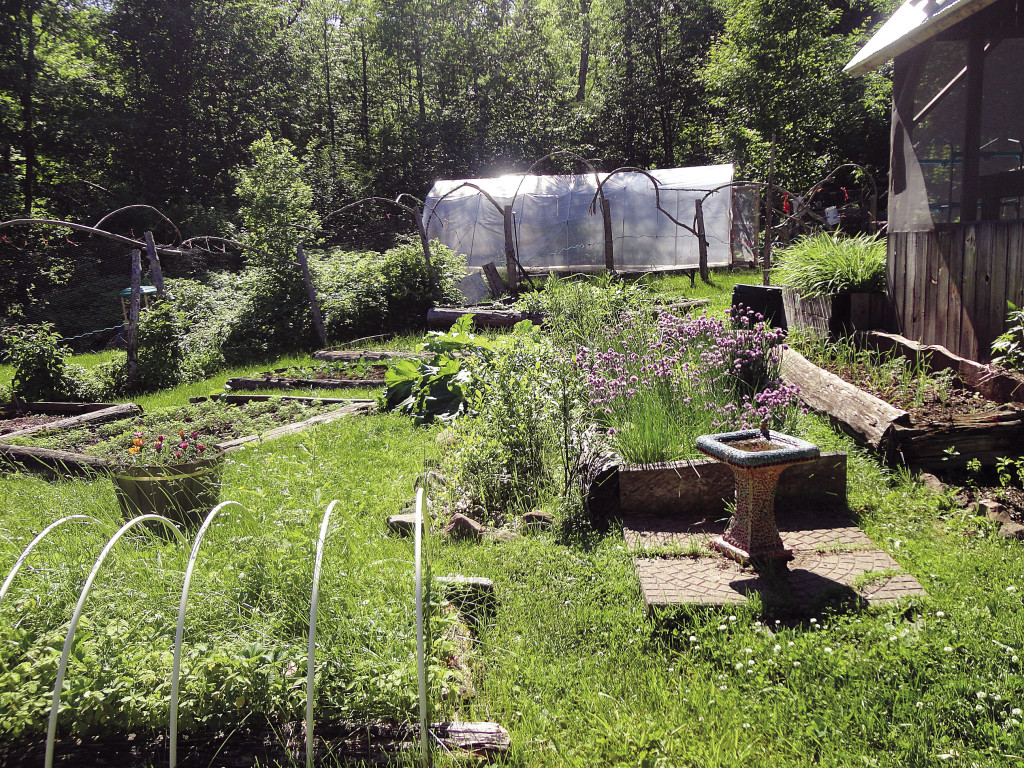Gardening can be daunting on the North Shore—the soil can be difficult to work, the weather doesn’t always agree, and there are bugs—but it can be done. Both of us grew up eating produce out of large gardens, so having one of our own was inevitable. But when we first moved here 15 years ago, the common sentiment amongst most people was a sarcastic “good luck.” We quickly learned that there was some truth to that sarcasm—Northern Minnesota gardening is a far cry from the Missouri and Wisconsin gardens of our childhood where you just dig a hole, plop the plants in, maybe water from time to time, and by fall you can’t give the tomatoes away. Growing your own fresh produce can be done up here, but you do need some time and a strong will; what you don’t need is a lot of money.
The primary obstacle to overcome when gardening in the Northwoods is the soil. Most of the North Shore is rocky, and those without rocks have clay—only a lucky few have a bit of topsoil. A great solution: raised beds. Raised beds are a great way to start a small garden.
We started with just a couple small raised beds and added as we cleared more space and had more time to invest in maintenance. A cedar swamp on our property provides plenty of raised bed building materials, but even without this, you can build with any leftover building supplies. We have used rocks (plentiful for most), chunks of timbers, long pieces of one-by that can be curved—even a couple of old hand-washing machines. Be creative! Simply dig up the area you wish to use, ridding it of grass, rocks, etc., then create the shape. We began with logs that we sawed in half, lengthwise, then interlocked like Lincoln Logs, to create square- or rectangle-shaped beds. We also created ovalshaped herb gardens by edging with medium- to largesized rocks. Soil and manure are then added, allowing the gardener a way to build soil, while also providing a way to control moisture. Keep this in mind when deciding on the height of the bed. Although it is easier on the back to have a very tall bed, they quickly drain and dry outneeding more frequent watering.
Another challenge to North Shore gardening is the climate, and more folks are using a greenhouse or hoophouse to extend their season. These structures need not be complicated or expensive. We ripped a log in half,lengthwise, with a chainsaw and drilled holes where we inserted bent pieces of electric conduit to form a hoophouse. Two 10-foot pieces joined at the ridge work perfectly. We have found a gambrel (barn) shape with flat sides and a steeper peak help shed snow. A ridge beam of 2-by-4 material helps keep conduit spacing consistent, as well as one post in the center to help with snow load. We built a simple hinged door frame on each end and made a door with leftover pieces of plastic from covering the greenhouse frame. The plastic is then wrapped around both ends and attached to the door frames. The cost could be as little as the price of the conduit and connectors (approx. $100), the greenhouse plastic ($100-200, 6 mm plastic will last the best. We got seven years out of the last piece), and the wood you need for the base and doors. Tomatoes, peppers and cucumbers love the heat—and it’s a great place to hide from the bugs.
Another important decision can be the plants or seeds you start with. Your options are limited to short season, cold tolerant varieties. We have tried to push it with melons and squash that have 90-110 days to maturity, but if you want to get the best results, you need to look for varieties with the least number of days to maturity, even with a greenhouse. In our greenhouse, we typically plant tomatoes, basil, peppers (hot and sweet bell varieties) and sometimes eggplant or winter squash. Last year we threw in four cucumber plants, producing far more cucumbers off those four plants than the 20 plants outside the greenhouse. We rotate the raised beds every year so as not to deplete the soil, as we grow everything organically. We consistently plant carrots, lettuce, cucumbers, beans, zucchini, kale and potatoes. Fresh produce through the summer is one of our main goals, but we also want to put food up for winter. Without a root cellar, or the ability to freeze due to our solar power system, this means a lot of canning. Most of the vegetables we plant are those easily canned for winter use. We’ve tried dabbling in other vegetables, but find these to be easiest in our area.
Starting a garden doesn’t have to be difficult. Think small and simple:
- Build yourself a small bed with whatever resources you have on hand.
- It takes every gardener time to build up healthy soil, so don’t sweat it if things aren’t perfect your first time around.
- Buy plants and seeds sold locally because these are best suited to our climate.
- Start with an easy crop such as carrots, lettuce, or zucchini. Or begin with a small herb garden.
We’ve lost almost entire crops to everything from slugs to groundhogs to a hard frost in August, but even a small yield of produce has its rewards. There is nothing quite as nice as eating vegetables that you grew on your own, straight from the garden. Happy planting!

